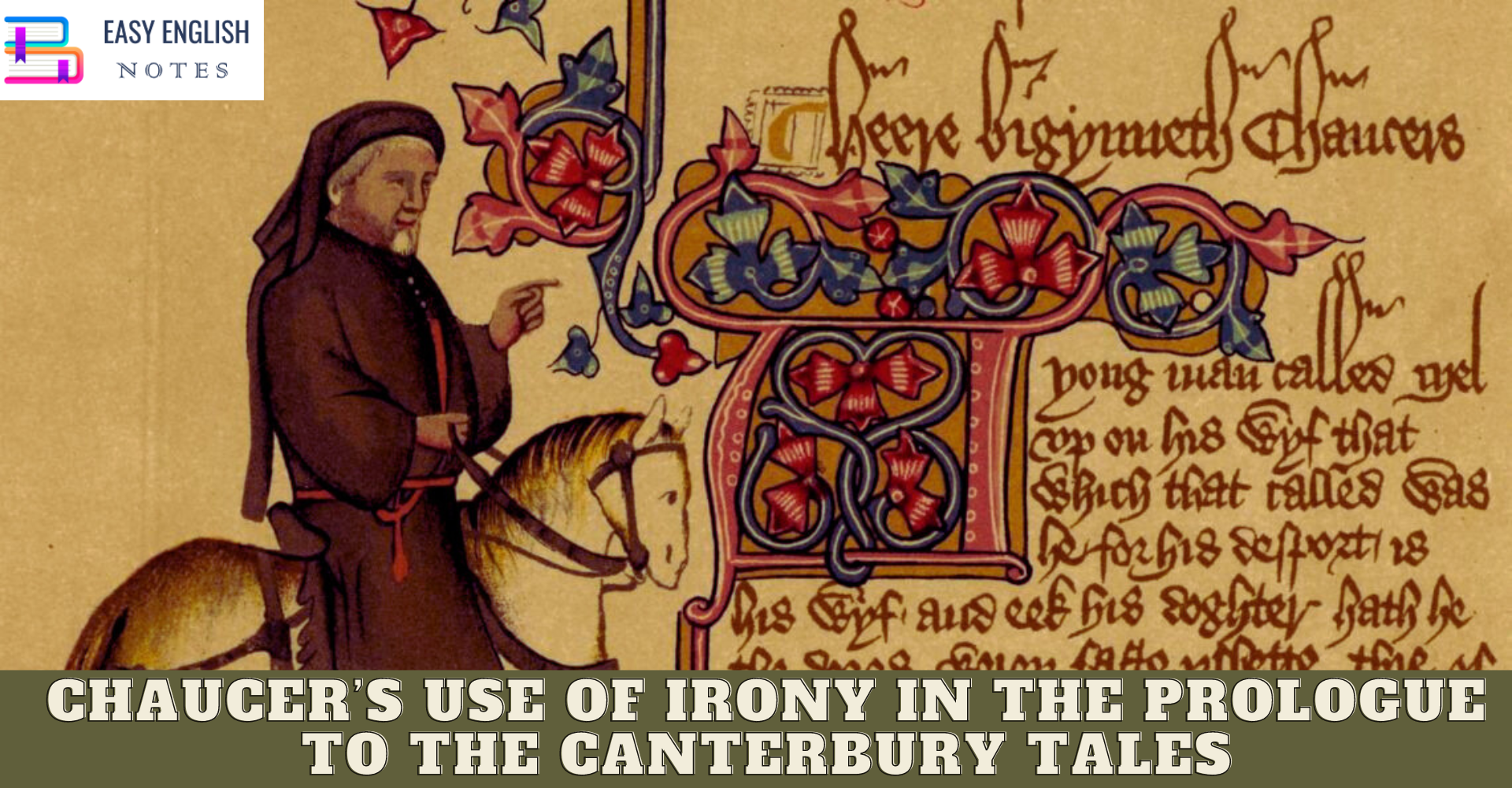In satire, there is the use of irony, humor, and exaggeration to criticize the foibles and vices of people. Chaucer cleverly satirizes many of the pilgrims as he points to their hypocrisy.
In the Canterbury Tales, Geoffrey Chaucer creates what is known as estate satire. In Medieval times, an estate was a division of society; there were three estates: the Clergy (those who prayed), the Nobility (those who fought) and the Peasantry (those who labored). The largest target of this satire is the Clergy because it is rife with hypocrisy.
Besides the Pardoner, who has previously been mentioned, the Prioress is another member of the estate of the Clergy whom Chaucer satirizes in his own inimitable way. The Prioress is a nun who ranks just below the abbess, and she serves as an example to the other nuns. However, the Prioress in Chaucer’s Tales is anything but an example of humility and poverty. On the contrary, she is ironically affected as sings…with a fine( intoning through her nose,….(And she spoke daintily in French, extremely, (…French in the Paris style she did not know…..( for courtliness she had a special zest “a fine intoning” is verbal irony as Chaucer writes the opposite of what he means: she is affected in her manner.
Google Ads PPC Training Digital – membership area
An Exclusive Blood Sugar Balancing And Weight Loss
Not only is the nun affected in her mannerisms, she is vain as Chaucer points to her wearing “a coral trinket on her arm,” and a golden brooch of brightest sheen.” These are certainly not the sort of things that a humble nun would own, so there is more irony.
The Monk, too, Is also pilgrim whom Chaucer satirizes. Chaucer criticizes the monk’s lack of humility with verbal irony:
…a monk out of his cloister(That was a text he held not worth an oyster; (And I agreed and said his views were sound).
The monk also ignores his vows of poverty and humility, and Chaucer in again ironic as he describes what a good hunter the Monk is. He owns Greyhounds and hunts, “sparing no expense.” He also dresses luxuriously:
…he spared no expense. I saw his sleeves were garnished at the hand, With fine gray fur, the finest in the land, (And on his hood, to fasten it at his chin) (He had a wrought-gold cunningly fashioned pinL Into a lover’s knot it seemed to pass).
Not only has he ignored his vows of poverty with his dogs and fine horse and his clothes trimmed in fur, and humility as he possesses eyes that Chaucer describes ironically, writing that they “glittered like flame.” Apparently, the Monk has also violated his vow of chastity, as well, as he wears a lover’s knot. In addition, the monk is guilty of the cardinal sin of gluttony as, ironically, Chaucer writes that he enjoys “a fat swan best.”
Also Read :
- Compare Hamlet with Macbeth, Othello and other Tragedies
- “The Pardoner’s Tale” is the finest tale of Chaucer
- Prologue to Canterbury Tales – (Short Ques & Ans)
- Confessional Poetry – Definition & meaning
Chaucer’s Prologue to the Canterbury Tales is a work of art that showcases his literary talent and remarkable ability to use irony to convey social and moral issues of medieval England. Through the descriptions of the various pilgrims, Chaucer uses irony to reveal their flaws and hypocrisy, providing insightful commentary on the state of society at the time.
One of the most striking examples of irony in the Prologue is the portrayal of the Knight. Chaucer introduces him as a man of honor, valor, and loyalty, a paragon of chivalry who has fought in many battles for the Christian faith. However, Chaucer also notes that the Knight has fought in many wars and has seen a great deal of bloodshed. This ironic contrast suggests that the Knight’s character may not be as pure and idealistic as he appears on the surface. Moreover, the fact that the Knight is one of the few characters in the Prologue who is portrayed in a positive light highlights the general moral decay of the other pilgrims.
Another example of irony is the depiction of the Prioress, who is described as a modest, refined, and virtuous woman. However, Chaucer also notes that the Prioress wears expensive jewelry, is overly concerned with her appearance, and speaks French with an affected accent. This irony suggests that the Prioress is not as religious as she appears on the surface and that she is more concerned with worldly things than spiritual matters. Furthermore, the fact that the Prioress is supposed to be a symbol of purity and devotion in the Church highlights the hypocrisy and corruption of the Church at the time.
Chaucer also uses irony to expose the flaws of the Friar, who is described as a man who is charitable, sociable, and kind. However, Chaucer also notes that the Friar uses his position to extract money from people, particularly from women who confess to him. This ironic contrast suggests that the Friar is more interested in worldly pleasures than spiritual matters and that his supposed kindness is only a façade for his greed and avarice. Moreover, the fact that the Friar is a member of the Church highlights the hypocrisy and corruption of the Church at the time.
Overall, Chaucer’s use of irony in the Prologue to the Canterbury Tales is a testament to his skill as a writer and his ability to critique the social and moral issues of his time. By exposing the flaws and contradictions of his characters, Chaucer reveals the complexity of human nature and the societal structures that shape it. Through his use of irony, he challenges the reader to question their own assumptions and biases, and to see the world in a new and more critical light.
PLEASE HELP ME TO REACH 1000 SUBSCRIBER ON MY COOKING YT CHANNEL (CLICK HERE)











